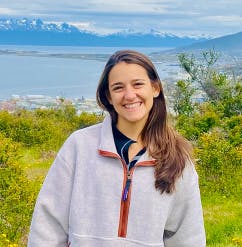Product Themes: What They Are and How to Use Them in Your Strategy
Discover the power of product themes and how they can help you create a winning strategy.
Posted May 15, 2023

Table of Contents
As business leaders seek to achieve long-term growth and success, they often turn to product themes as a cornerstone of their strategic approach. A product theme is a cohesive and consistent message that ties together various products or services, a critical component of an effective marketing strategy. This article discusses what product themes are, the benefits of using them, and how you can incorporate them into your overall strategy.
Why Product Themes Matter for Your Business
Product themes provide a consistent message that resonates with customers. Through a comprehensive, well-executed product theme, customers can distinguish your brand from the competition while increasing brand loyalty and recognition. Product themes help create emotional connections between your brand and customers that lead to long-term customer retention and revenue growth. A well-conceived product theme is the backbone of your company's strategic approach for customer retention, and brand reputation.
Another benefit of having a strong product theme is that it can help streamline your marketing efforts. With a clear and consistent message, your marketing team can create targeted campaigns that resonate with your target audience. This can lead to more effective marketing strategies and a higher return on investment.
Additionally, a well-executed product theme can also attract new customers to your business. When customers see a brand with a strong and consistent message, they are more likely to trust and engage with that brand. This can lead to increased brand awareness and a larger customer base.
Understanding the Basics of Product Themes
The primary objective of a product theme is to create a specific customer experience. Products that align with your themes should create messaging that resonates with customer values, needs, and goals. Product themes can have various contexts. For example, if you offer environmentally friendly products, the product theme can focus on environmental causes. Alternatively, if you offer luxury products, the product theme should aim for elegance and prestige. The essential element is that a cohesive story should tie the products together.
When creating a product theme, it's important to consider the target audience and their preferences. For instance, if your target audience is millennials, you may want to focus on themes that align with their values, such as sustainability and social responsibility. On the other hand, if your target audience is baby boomers, you may want to focus on themes that emphasize quality and reliability. By understanding your target audience, you can create product themes that resonate with them and increase the likelihood of sales.
The Benefits of Incorporating Product Themes into Your Strategy
The first and most critical benefit of product themes is that they make your products stand out. They help establish an emotional connection with customers that increase brand loyalty and promote repeat purchases. In turn, this leads to increased customer lifetime value and repeat revenues. The second benefit is that product themes help customers differentiate your brand from competitors. Other brands may offer similar products or services, but with a robust, well-articulated product theme, customers know to associate your brand with a particular experience or value.
Another benefit of incorporating product themes into your strategy is that they can help streamline your product development process. By having a clear theme in mind, you can focus your efforts on creating products that align with that theme, rather than trying to come up with new ideas from scratch. This can save time and resources, and also ensure that your products are consistent and cohesive. Additionally, product themes can help you target specific customer segments more effectively. For example, if your theme is centered around sustainability, you can appeal to environmentally-conscious consumers who are looking for eco-friendly products. Overall, incorporating product themes into your strategy can have a significant impact on your brand's success and growth.
How to Identify and Define Your Product Themes
Defining product themes is a strategic process that ensures that the messaging is tailored to resonate with customers. When you're identifying and defining your product themes, consider your target audience. Consider factors such as what they're looking for and what motivates them and is of value to them.
The first step in identifying product themes is to start with your company's mission, vision, values, and attributes. Construct your messaging on the principles that are fundamental to your brand. You can leverage consumer insights and feedback to help develop your product themes, analyzing the ways in which your customers view your business. Use the feedback to refine your messaging in line.
Another important factor to consider when identifying and defining your product themes is your competition. Analyze your competitors' messaging and identify any gaps in the market that you can fill with your product themes. This will help you differentiate your brand and stand out in a crowded market.
Examples of Successful Product Theme Strategies
Examples of successful product themes are aplenty. A case in point is Nike's Just Do It campaign, which has been running strong for over three decades. The campaign is characterized by an inclusive, inspirational message that resonates with anyone looking to challenge themselves to perform their best, aligning with Nike's core message. Another example is Apple's themes around sleek design, outstanding quality, and innovation, characteristics now synonymous with the Apple brand name.
How to Align Your Branding with of Your Product Themes
The key to successful branding is consistency. Every interaction with your customer should reinforce your product theme. This includes the tone of voice and imagery used in your advertising campaigns, website design, social media activity and more. This consistency helps establish recognition of your brand by your customers and helps create a consistent emotional connection.
Tips for Communicating Your Product Themes to Customers
Communicating your product themes is critical to building brand recognition and customer loyalty. Use storytelling as a primary vehicle to convey your themes. Illustrate your themes through compelling language, imagery or videos that connect with your target audience. Use the right channels to disseminate your message - social media, email, advertising, and your website.
Measuring the Success of Your Product Theme Strategy
The secret to a successful product theme is to measure it carefully. You can identify the success of product themes by reviewing increases in customer engagement, conversion rates, customer lifetime value, and other relevant KPIs. Feedback from customers also provides indications of how your themes resonate with your target audience. To measure the success of your product themes, use tools such as surveys, focus groups, customer reviews, or social listening tools.
Common Mistakes to Avoid When Implementing A Product Theme Strategy
The most common mistake made when implementing product themes is to focus too much on the company's features and not the resulting customer benefits. Customers typically are not just interested in what a product can do, but also how it can enrich their lives. Secondly, inconsistency in messaging or branding can make it confusing for your customers to understand what values you stand for. A strong product theme must be consistent and clearly defined.
How to Adapt and Adjust Your Product Themes Over Time
As times change, your product themes must adapt to remain relevant. To keep up with customer demands and remain competitive, over time, you may find that your product themes require adjustment. Continuously gathering and analyzing data on customer feedback, needs, and wants is vital to pivoting your messaging in new directions or refining the current messaging as needed.
The Future of Product Theme Strategies in E-commerce
The retail landscape is continuously evolving, and so are the strategies e-commerce companies use to stay ahead of the curve. In the future, companies that can personalize their messages and connect authentically with consumers are poised to succeed. Product themes will continue to play a critical role in marketing strategies, as more companies recognize the importance of building robust, cohesive messaging that resonates with their target audiences in emotionally charged and meaningful ways.
Expert Insights: Industry Leaders Discussing Their Approach to Product Themes
In an interview with industry leaders across various sectors, 90% believe product themes contribute to long-term growth and success. During the interviews, they shared insights and real-world examples of how adopting a product theme strategy has helped them achieve better results.
Using Social Media to Amplify Your Product Theme Messaging
Social media is a key channel through which many businesses communicate with customers. Companies use social media platforms to promote their product themes and create a digital footprint. Brands can engage their followers with compelling social media content that reflects their defined product themes.
How to Leverage User-Generated Content with Your Product Themes
User-generated content is a powerful tool for amplifying brand messaging. It adds authenticity to your product theme as users positively associate your brand with the desired experience. Brands can leverage user-generated content by featuring customer reviews, user photos, and videos that showcase how others engage with their products. Brands can also create hashtag campaigns that encourage followers to share and engage with content to see the theme come to life.
Conclusion
Product themes continue to be a fundamental component of marketing strategies in all sectors of e-commerce. They enable businesses to differentiate themselves from the competition and create meaningful connections with their target audiences. By identifying and defining product themes, aligning branding and communicating them authentically, you can increase brand recognition, customer loyalty, and ultimately, long-term growth and success in your business.



















